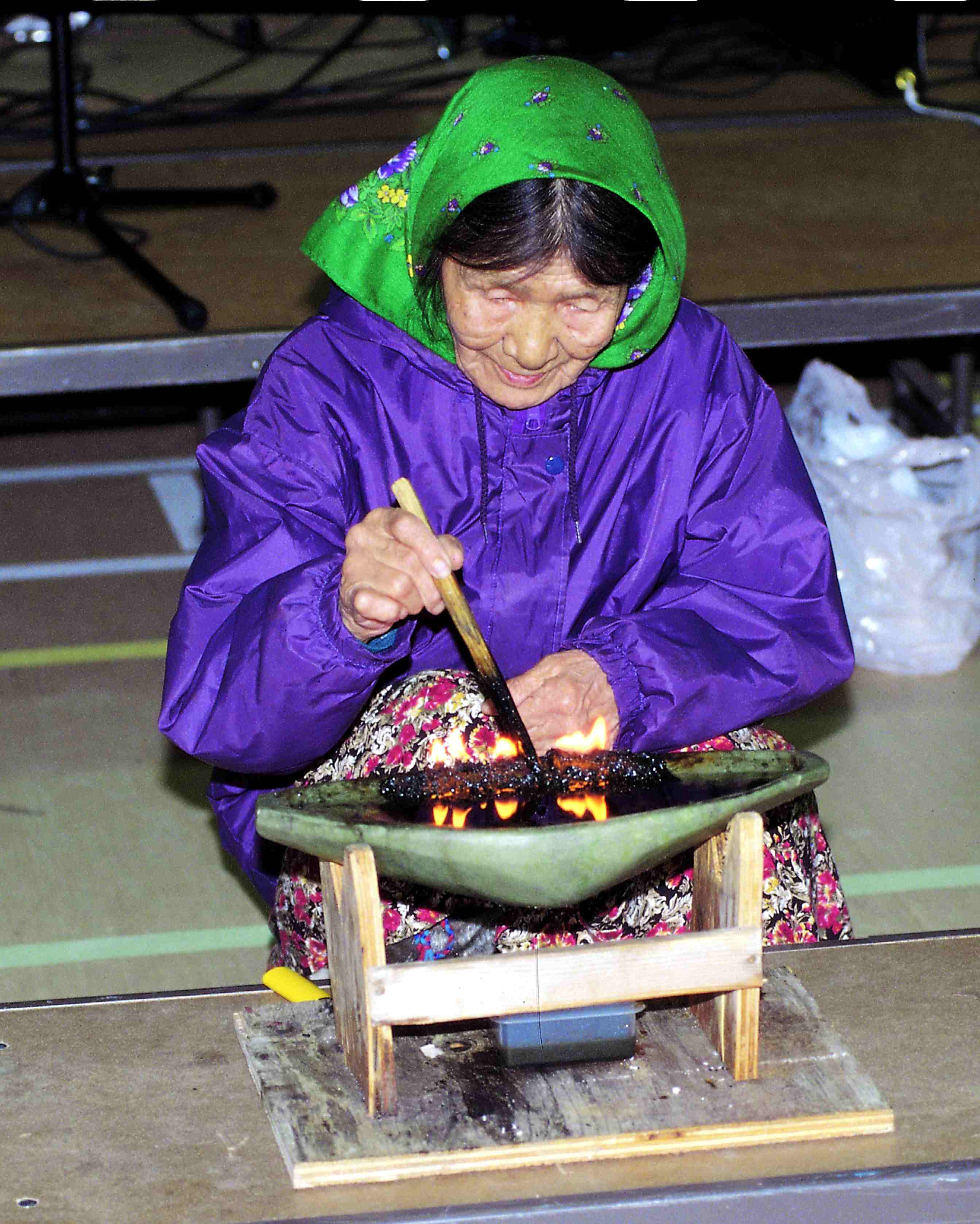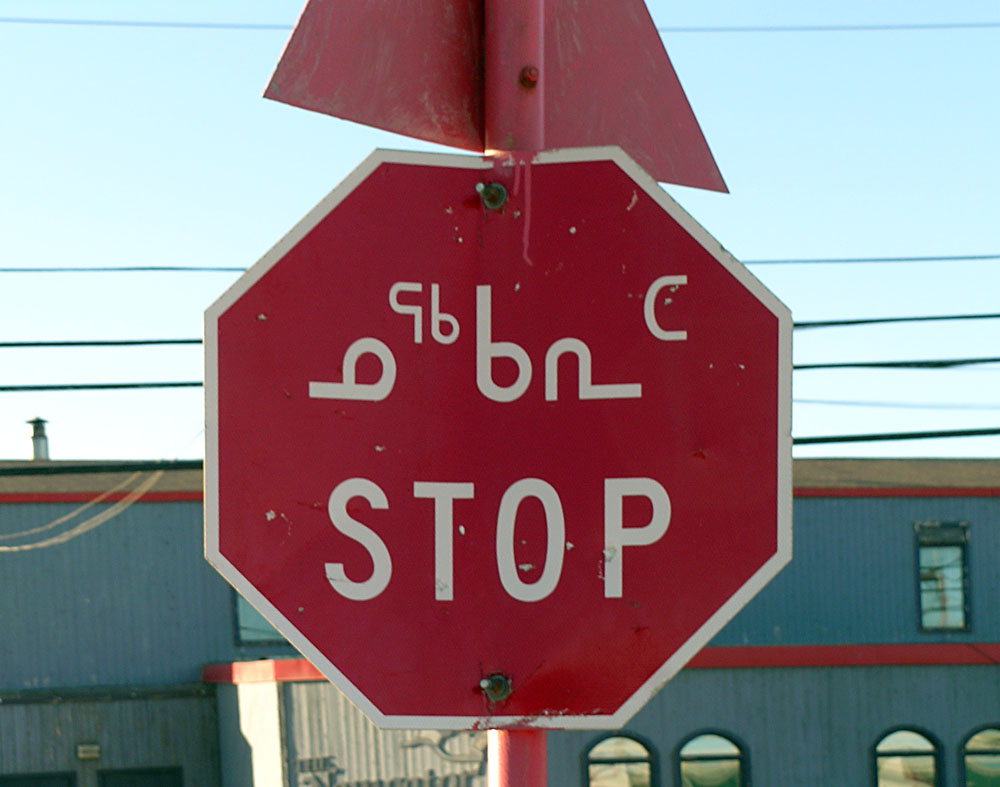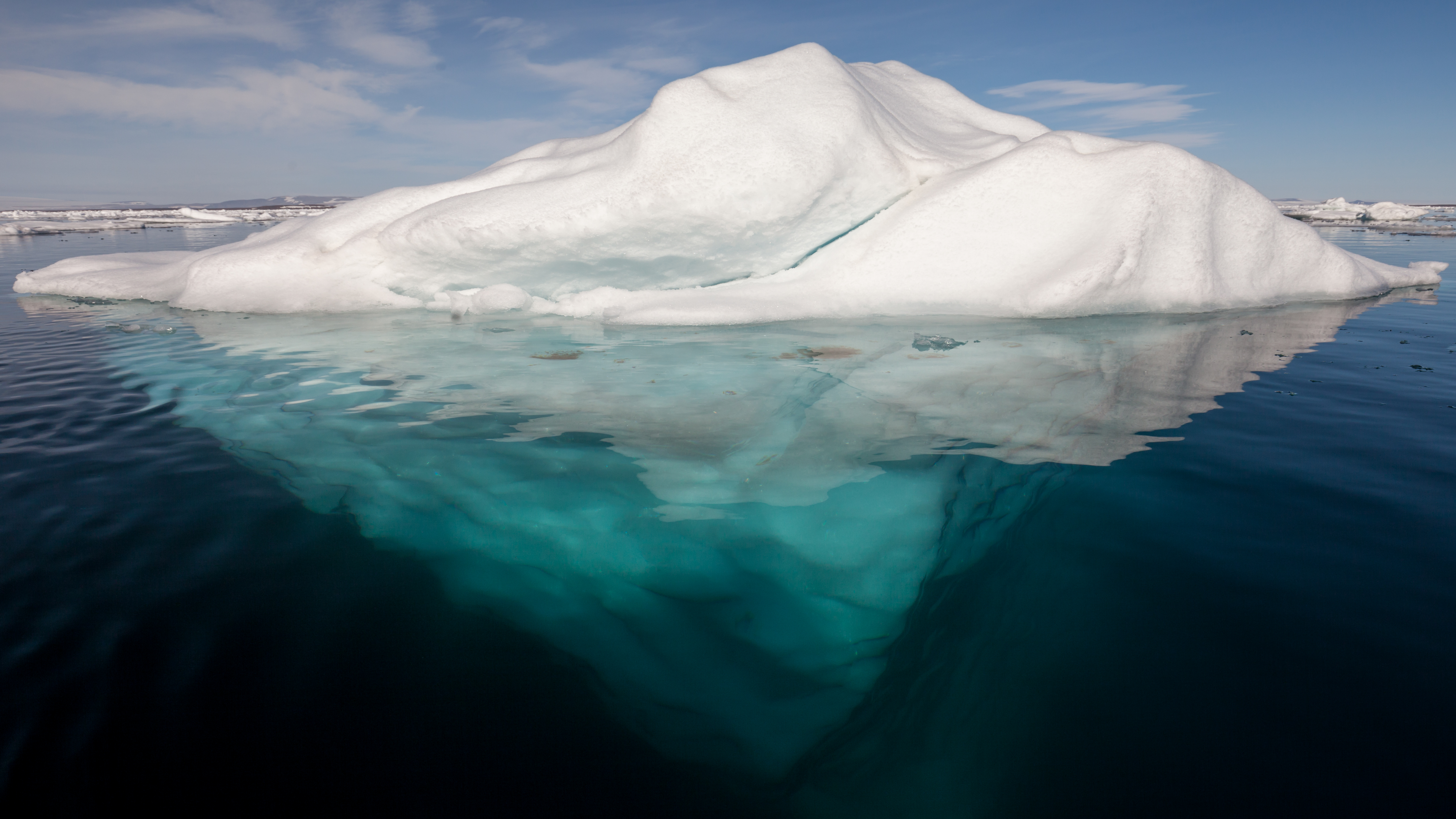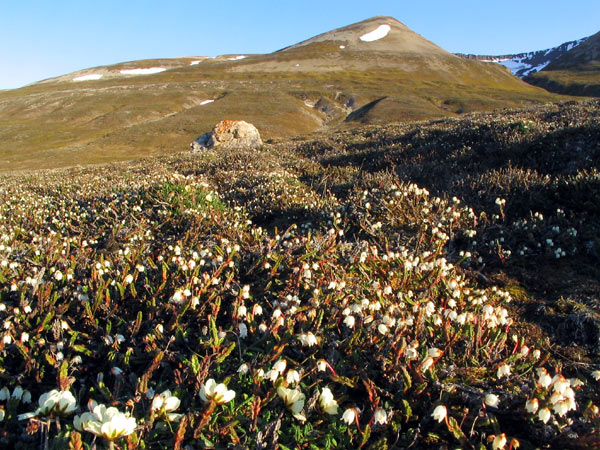|
Coat Of Arms Of Nunavut
The coat of arms of Nunavut was granted by a warrant of Roméo LeBlanc, Governor General of Canada, dated 31 March 1999, one day before the territory of Nunavut, Canada, was created. The same document specified the flag of Nunavut. Overview The symbol was designed in collaboration with Inuit elders, leaders, artists, groups, and the general population of the territory. Each symbol was chosen individually from the 800 submissions for the flag and coat of arms that were received. Five draft designs were created in collaboration between the heraldic artist at the Canadian Heraldic Authority and Andrew Qappik, an Inuk artist from Pangnirtung. The shield is blue and gold, symbolizing the riches of the land. According to the blazon, the shield should be presented on a roundel shaped shield, rather than the traditional escutcheon shape in European heraldry. In chief is a representation of the midnight sun and of the North Star, or ''Niqirtsuituk''. Below are a '' qulliq'', a sto ... [...More Info...] [...Related Items...] OR: [Wikipedia] [Google] [Baidu] |
Attitude (heraldry)
In heraldry, the term attitude describes the ''position'' in which a figure (animal or human) is emblazoned as a charge, a supporter, or as a crest. The attitude of a heraldic figure always precedes any reference to the tincture of the figure and its parts. Some attitudes apply only to predatory beasts, exemplified by the beast most usual to heraldry – the heraldic lion; other terms apply to docile animals, such as the doe, usually emblazoned as a "hind". Other heraldic attitudes, such as ''volant'' (flying), describe the positions of birds, exemplified by the bird most usual to heraldry – the heraldic eagle; moreover, birds also are described by the positions of their wings. The term ''naiant'' (swimming) applies to fish, swans, ducks, and geese. The term ''segreant'' is applied to the griffin, as an approximation of ''rampant'', and is applied to the dragon. Animal figures are positioned in profile, facing dexter (the viewer's left), and persons are shown ''affronté'' ... [...More Info...] [...Related Items...] OR: [Wikipedia] [Google] [Baidu] |
Kudlik
The qulliq or kudlik (, ; ; ), is the traditional oil lamp used by many circumpolar peoples, including the Inuit, the Chukchi and the Yupik peoples. The fuel is seal-oil or blubber, and the lamp is made of soapstone. A is lit with a stick called a . This characteristic type of oil lamp provided warmth and light in the harsh Arctic environment where there was no wood and where the sparse inhabitants relied almost entirely on seal oil or on whale blubber. This lamp was the single most important article of furniture for Inuit in their dwellings. History It is uncertain in which period the seal-oil lamps began to be used. They are part of a series of technological innovations among the Arctic peoples whose introduction and spread has been partly documented. Oil lamps have been found in sites of Paleo-Eskimo communities dating back to the time of the Norton tradition, 3,000 years ago. They were a common implement of the Dorset culture and of the Thule people, the lamps manufactu ... [...More Info...] [...Related Items...] OR: [Wikipedia] [Google] [Baidu] |
Inuinnaqtun
Inuinnaqtun (, ; natively meaning 'like the real human beings/peoples') is an Inuit language. It is spoken in the central Canadian Arctic. It is related very closely to Inuktitut, and some scholars, such as Richard Condon, believe that Inuinnaqtun is more appropriately classified as a dialect of Inuktitut. The government of Nunavut recognises Inuinnaqtun as an official language in addition to Inuktitut, and together sometimes referred to as Inuktut.''Official Languages Act'', S.Nu. 2008, c. 10 s. 3(1) wit s. 1(2). It is spoken in the |
Inuktitut
Inuktitut ( ; , Inuktitut syllabics, syllabics ), also known as Eastern Canadian Inuktitut, is one of the principal Inuit languages of Canada. It is spoken in all areas north of the North American tree line, including parts of the provinces of Newfoundland and Labrador, Quebec, to some extent in northeastern Manitoba as well as the Northwest Territories and Nunavut. It is one of the aboriginal languages written with Canadian Aboriginal syllabics. It is recognized as an official language in Nunavut alongside Inuinnaqtun and both languages are known collectively as ''Inuktut''. Further, it is recognized as one of eight official native tongues in the Northwest Territories. It also has legal recognition in Nunavik—a part of Quebec—thanks in part to the James Bay and Northern Quebec Agreement, and is recognized in the Charter of the French Language as the official language of instruction for Inuit school districts there. It also has some recognition in NunatuKavut and Nunatsiavu ... [...More Info...] [...Related Items...] OR: [Wikipedia] [Google] [Baidu] |
Inuktitut Syllabics
Inuktitut syllabics (, or , ) is an abugida-type writing system used in Canada by the Inuktitut-speaking Inuit of the Provinces and territories of Canada, territory of Nunavut and the Nunavik region of Quebec. In 1976, the Language Commission of the Inuit Cultural Institute made it the co-official script for the Inuit languages, along with the Latin script. The name derives from the root , meaning "mouth". The alternative, Latin-based writing system is named Inuit languages#Writing, (), and it derives from , a word describing the markings or the grain in rocks. meaning "new writing system" is to be seen in contrast to (), the "old syllabics" used before the reforms of 1976. Inuktitut is one variation on Canadian Aboriginal syllabics, and can be digitally encoded using the Unicode standard. The Unicode block for Inuktitut characters is called Unified Canadian Aboriginal Syllabics (Unicode block), Unified Canadian Aboriginal Syllabics. History The first efforts to write In ... [...More Info...] [...Related Items...] OR: [Wikipedia] [Google] [Baidu] |
Iceberg
An iceberg is a piece of fresh water ice more than long that has broken off a glacier or an ice shelf and is floating freely in open water. Smaller chunks of floating glacially derived ice are called "growlers" or "bergy bits". Much of an iceberg is below the water's surface, which led to the expression " tip of the iceberg" to illustrate a small part of a larger unseen issue. Icebergs are considered a serious maritime hazard. Icebergs vary considerably in size and shape. Icebergs that calve from glaciers in Greenland are often irregularly shaped while Antarctic ice shelves often produce large tabular (table top) icebergs. The largest iceberg in recent history, named B-15, was measured at nearly in 2000. The largest iceberg on record was an Antarctic tabular iceberg measuring sighted west of Scott Island, in the South Pacific Ocean, by the USS ''Glacier'' on November 12, 1956. This iceberg was larger than Belgium. Etymology The word ''iceberg'' is a partial loan tr ... [...More Info...] [...Related Items...] OR: [Wikipedia] [Google] [Baidu] |
Cassiope Tetragona
''Cassiope tetragona'' (common names include Arctic bell-heather, white Arctic mountain heather and Arctic white heather) is a plant native to the high Arctic and northern Norway, where it is found widely. Growing to 10–20 cm in height, it is a strongly branched dwarf shrub. The leaves are grooved, evergreen, and scale-like in four rows. Pedicels are long and arched. The plant bears bell-shaped, solitary flowers usually with white and pink lobes and pink anthers. The flower stalks and sepals are red, but the petals may also be yellowish-white. The anthers can also be brownish-yellow and flower stalks and sepals yellowish-green. It grows on ridges and heaths, often in abundance and forming a distinctive and attractive plant community. In Greenland, indigenous peoples use the plant as important source of fuel. Because of high resin content, it burns even when wet. The plant can also be used in cooking. Canadian chef Louis Charest used arctic heather as a smoked herb ... [...More Info...] [...Related Items...] OR: [Wikipedia] [Google] [Baidu] |
Chamaenerion Latifolium
''Chamaenerion latifolium'' (formerly ''Epilobium latifolium'', also called ''Chamerion latifolium'') is a species of flowering plant in the evening primrose family known by the English common names dwarf fireweed and river beauty willowherb. It has a circumboreal distribution, appearing throughout the northern regions of the Northern Hemisphere, including alpine, sub-Arctic, and Arctic areas such as snowmelt-flooded gravel bars and talus, in a wide range of elevations.Flora of the Canadian Arctic Archipelago This is a perennial herb growing in clumps of leaves variable in size, shape, and texture above a woody . The leaves are 1 to 10 centimeters long, lance-shaped to oval, point ... [...More Info...] [...Related Items...] OR: [Wikipedia] [Google] [Baidu] |
Narwhal
The narwhal (''Monodon monoceros'') is a species of toothed whale native to the Arctic. It is the only member of the genus ''Monodon'' and one of two living representatives of the family Monodontidae. The narwhal is a stocky cetacean with a relatively blunt snout, a large Melon (whale), melon, and a shallow ridge in place of a dorsal fin. Males of this species have a large () long tusk, which is a protruding left Canine tooth, canine thought to function as a weapon, a tool for feeding, in sexual selection, attracting mates or sensing water salinity. Specially adapted slow-twitch muscles, along with the jointed neck vertebrae and shallow dorsal ridge allow for easy movement through the Arctic environment, where the narwhal spends extended periods at great depths. The narwhal's geographic range overlaps with that of the similarly built and closely related beluga whale, and the animals are known to interbreed. Narwhals inhabit the Arctic waters of Canada, Greenland and Russia. ... [...More Info...] [...Related Items...] OR: [Wikipedia] [Google] [Baidu] |
Caribou
The reindeer or caribou (''Rangifer tarandus'') is a species of deer with circumpolar distribution, native to Arctic, subarctic, tundra, boreal, and mountainous regions of Northern Europe, Siberia, and North America. It is the only representative of the genus ''Rangifer''. More recent studies suggest the splitting of reindeer and caribou into six distinct species over their range. Reindeer occur in both migratory and sedentary populations, and their herd sizes vary greatly in different regions. The tundra subspecies are adapted for extreme cold, and some are adapted for long-distance migration. Reindeer vary greatly in size and color from the smallest, the Svalbard reindeer (''R.'' (''t.'') ''platyrhynchus''), to the largest, Osborn's caribou (''R. t. osborni''). Although reindeer are quite numerous, some species and subspecies are in decline and considered vulnerable. They are unique among deer (Cervidae) in that females may have antlers, although the prevalence of an ... [...More Info...] [...Related Items...] OR: [Wikipedia] [Google] [Baidu] |
The Crown
The Crown is a political concept used in Commonwealth realms. Depending on the context used, it generally refers to the entirety of the State (polity), state (or in federal realms, the relevant level of government in that state), the executive government specifically or only to the monarch and their Viceroy, direct representatives. The term can be used to refer to the rule of law; or to the functions of executive (government), executive (the Crown-King-in-Council, in-council), legislative (the Crown-in-parliament), and judicial (the Crown on the bench) governance and the civil service. The concept of the Crown as a corporation sole developed first in the Kingdom of England as a separation of the physical crown and property of the kingdom from the person and personal property of the monarch. It spread through English and later British colonisation and developed into an imperial crown, which rooted it in the legal lexicon of all 15 Commonwealth realms, their various dependencies, ... [...More Info...] [...Related Items...] OR: [Wikipedia] [Google] [Baidu] |
Crown (heraldry)
A crown is often an emblem of a sovereign state, usually a monarchy (see The Crown), but also used by some republics. A specific type of crown is employed in heraldry under strict rules. Indeed, some monarchies never had a physical Crown (headgear), crown, just a heraldic representation, as in the constitutional kingdom of Belgium. Crowns are also often used as symbols of religious status or veneration, by divinities (or their representation such as a statue) or by their representatives, e.g. the Black Crown of the Karmapa, Karmapa Lama, sometimes used a model for wider use by devotees. A crown can be a charge (heraldry), charge ''in'' a coat of arms, or set ''atop'' the shield to signify the status of its owner, as with the coat of arms of Norway. Physical and heraldic crowns Sometimes, the crown commonly depicted and used in heraldry differs significantly from any specific physical crown that may be used by a monarchy. As a display of rank If the bearer of a coat of arms ... [...More Info...] [...Related Items...] OR: [Wikipedia] [Google] [Baidu] |






